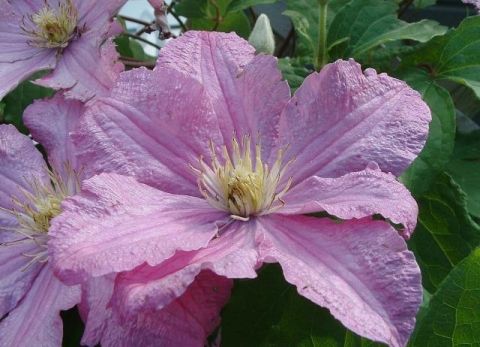
Clematis in the Catskills region are perhaps not the most often recognized garden plant, but Catskills gardeners know that they can be spectacular additions to our gardens here. Some varieties can be a bit fussy about their planting location, but once established clematis will become more substantial and flower for many years.
Most clematis varieties are vines and they climb by wrapping their leaf stems around whatever they are using as support. The Catskills region has its own common native species of clematis, Clematis virginiana, with small white flowers, pictured below top.
Here in the Catskills region, clematis bloom late in the gardening season; some varieties were in full bloom a few weeks ago, some are at peak bloom now, and the latest varieties are just ramping up. The spring-flowering varieties do not flourish here. Their flowers issue from last year’s growth, and last year’s growth does not often make it through our winters. The later blooming clematis bloom from new growth and are more reliable bloomers in our region.
One of the most popular clematis grown in gardens is the variety x Jackmanni . The ‘x’ means that it is a hybrid. It is distinctive for its deep purple/blue color and the graceful narrowing of the petal bases. The variety ‘Tiedye’ is a Jackmanni type of flower with distinctive lighter markings (both pictured below).
There are over 300 species in the genus Clematis, and that provides a lot of raw genetic material for plant breeders to play with. Consequently, there has been an explosion in the last few decades of both fancy garden types with big blockbuster blooms, and also more species-derived wild-style introductions. One of these which does well in Catskills gardens is Clematis tangutica (pictured below). It is a very vigorous vine, distinctive for its yellow flowers.
To see the rest of the photos, check out our website version of this post, where the entire blog is posted!



